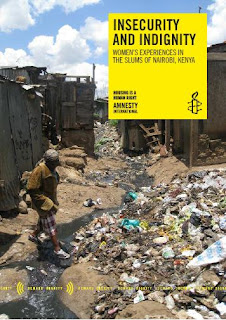A while back (5/14/12), I wrote about kindness. Of all the character traits we humans can possess, kindness is the one I value and admire the most in a person. Gratitude is an attitude reflected by a kind heart. The article pasted in below appears to confirm that...
A Grateful State: Gratitude is vital to well-being, research shows
November 22nd, 2012 in Psychology & Psychiatry
Before we eat Thanksgiving dinner at my house, along with saying grace, each of the 20 or so people at the table takes a turn lighting a candle and expressing gratitude. The appreciation can be lighthearted - for mashed potatoes or a day off from school. Or the thankfulness may be accompanied by a heavy heart - for the memories of a loved one recently passed.
As it happens, this expression is not an empty exercise. And if we developed the discipline to be consciously grateful on a regular basis, year-round, research shows we'd be happier and suffer less depression and stress. We'd sleep better and be better able to face our problems.
There's evidence that
gratitude is uniquely important to well-being. Long embraced by religion as a "manifestation of virtue," it's one of the few things that "can measurably change people's lives," says Robert Emmons, a University of California-Davis professor who has been studying it since 1998 and is the author of the book "Thanks! How the New Science of Gratitude Can Make You Happier."
"Gratitude implies
humility - a recognition that we could not be who we are or where we are in life without the contributions of others," Emmons writes.
At a time when Thanksgiving is the starting gun for a race to the mall, Jeffrey Froh has some insight as well.
"We know there's a
negative relationship between
materialism and gratitude. That's pretty powerful right there," says Froh, a professor at Hofstra University on New York's Long Island. His research with more than 1,000
high school students showed that grateful teenagers were also less likely to be depressed, more likely to want to give back to their communities and more likely to have higher grade-point averages, among other traits.
But despite the benefits, Emmons says, gratitude is in trouble.
"Outside of happiness, gratitude's benefits are rarely discussed these days. Indeed, in contemporary American society, we've come to overlook, dismiss or even disparage the significance of gratitude as a virtue," he says. "We have become entitled, resentful, ungrateful and forgetful."
Not all of us.
Gratitude, says Susan Swan, is an important component of yoga - something she's taught since 1991.
Almost three years ago, she had a stroke during a class. But when she tells the story, she focuses on her good fortune. Her students called 911, help came quickly and she was given an experimental drug that worked wonders. She has children, grandchildren and friends. Swan knows she doesn't look like she's had a stroke. At 68, she's tall and wrinkle free, with straight, shiny blond hair. Her speech is good, her aphasia not overwhelming. She's gone back to teaching yoga, which she credits for her ability to feel gratitude rather than anger. It's important, she says early one evening over tea in her tiny kitchen, to "come into the now. Lose your mind and find your senses. Right now, I am fine."
Swan, who also has survived breast and colon cancer, gives meaning to Emmons' statement that gratitude "is morally and intellectually demanding." He doesn't suggest forgetting the negative.
"If you have something that life serves up, you have a choice to say, 'Hey, there is a blessing in here,'" Swan said. "'How is it going to serve me and not impede me?'"
Judy Vaughan is a St. Joseph of Carondelet nun who "has real trouble with the institutional church" but a rock-solid belief in a God who is "a loving spirit who has my back," and a doctorate in social ethics from the University of Chicago.
"I learned from my mom the importance of saying thanks," Vaughan says. "She was born in 1916 and came from the school that said when you got gifts, you wrote notes." She founded and has lived since 1996 at Alexandria House, which actually is two lovely Mid-Wilshire homes offering transitional housing and support to homeless women and their children.
"Gratitude gives an opening to the universe to give more good things. Gratitude is opening to receive more good things from the universe," says Vaughan. She tries to be grateful every day, even now, when Alexandria House faces falling state and private funding.
"Gratitude really is a perspective. It is one that needs to be cultivated," Vaughan says. "It is a gift from God in my life that I like almost everyone I meet. I'm not naive, but I really work at seeing the positive in people."
Gratitude could save the planet, says filmmaker Louie Schwartzberg. "If you can really absorb the beauty of a flower or a landscape, can you really bear to see it destroyed?" he asks. "Gratitude touches your heart. And we need the heart to create a shift in consciousness."
Schwartzberg, who has been shooting time-lapse photography of flowers for more than three decades, showed his "Gratitude" film at a TedX Talk; it's among the most-watched presentations.
In it, author, lecturer and Benedictine brother David Steindl-Rast speaks: "You think this is just another day in your life. It's not just another day. It's the one day that is given to you, today. ... It's the only gift that you have right now, and the only appropriate response is gratefulness. ... If you learn to respond as if it were the first day in your life and the very last day, then you will have spent this day very well."
Look, really look, at a cloud, a stream, a strawberry, Schwartzberg urges. "Instead of gobbling it while you're reading the paper, say, 'Oh, my God,'" and take the time to be in awe of it.
—-
KEEPING A 'GRATITUDE' JOURNAL
The Greater Good Science Center at the University of California-Berkeley is making it easy to try out a "gratitude" journal, with an interactive online project launched this month that's shareable on social media. At www.Thnx4.org, anyone can sign up for a two-week journal plan that includes prompts to get your grateful thoughts flowing.
It also includes a survey so researchers can mine the data to look at the effects of gratitude in many specific ways, Emilian Simon-Thomas, who, with Robert Emmons of the University of California-Davis and others, developed the $5.6 million project, said Thursday. At Thnx4.org, participants take a survey of 78 questions, then get a little nudge for two weeks to write in their journal, perhaps sharing their grateful states on Facebook or other sites. At the end, after another survey, they'll get a report on their own changes - and be invited to stick around and continue to express gratitude, perhaps less frequently.
Of course, you can express gratitude on your own, and here are some of Emmons' suggestions:
Occasional "gratitude journaling," one to three times a week, is more effective than writing every day.
Journal writing is more effective if you make the conscious decision to become happier, more grateful, more positive.
Gratitude in depth is more important than "gratitude by the numbers." In other words, elaborating on a particular benefit in detail is more beneficial than listing several benefits more superficially.
Another recommendation is to focus on "mental subtraction" of good things from your life: Consider, for example, what life would be like if you had never met your spouse, rather than how grateful you are for that spouse.
(c)2012 Los Angeles Times
Distributed by MCT Information Services




























.jpg)






